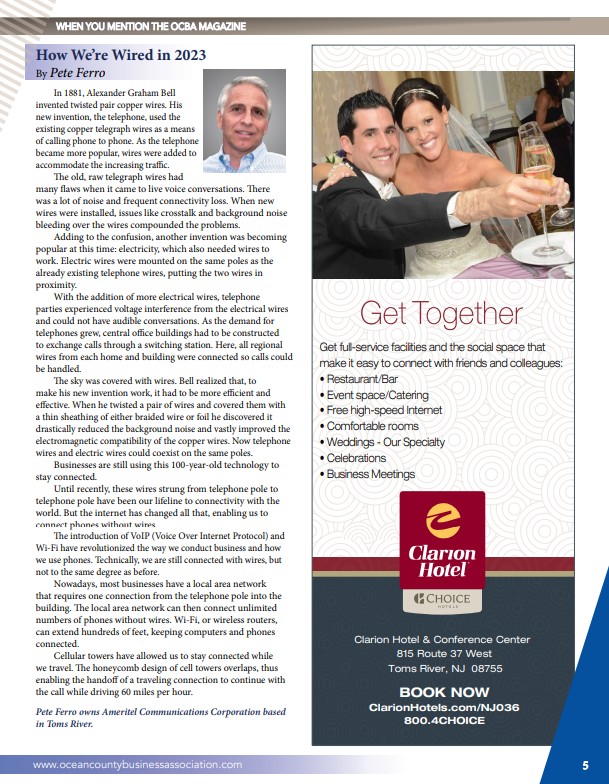
In 1881, Alexander Graham Bell invented twisted pair copper wires. His new invention, the telephone, used the existing copper telegraph wires as a means of calling phone to phone. As the telephone became more popular, wires were added to accommodate the increasing traffic.
The old, raw telegraph wires had many flaws when it came to live voice conversations. There was a lot of noise and frequent connectivity loss. When new wires were installed, issues like crosstalk and background noise bleeding over the wires compounded the problems.
Adding to the confusion, another invention was becoming popular at this time: electricity, which also needed wires to work. Electric wires were mounted on the same poles as the already existing telephone wires, putting the two wires in proximity.
With the addition of more electrical wires, telephone parties experienced voltage interference from the electrical wires and could not have audible conversations. As the demand for telephones grew, central office buildings had to be constructed to exchange calls through a switching station. Here, all regional wires from each home and building were connected so calls could be handled.
The sky was covered with wires. Bell realized that, to make his new invention work, it had to be more efficient and effective. When he twisted a pair of wires and covered them with a thin sheathing of either braided wire or foil he discovered it drastically reduced the background noise and vastly improved the
electromagnetic compatibility of the copper wires. Now telephone wires and electric wires could coexist on the same poles.
Businesses are still using this 100-year-old technology to stay connected.
Until recently, these wires strung from telephone pole to telephone pole have been our lifeline to connectivity with the world. But the internet has changed all that, enabling us to connect phones without wires.
The introduction of VoIP (Voice Over Internet Protocol) and Wi-Fi have revolutionized the way we conduct business and how we use phones. Technically, we are still connected with wires, but not to the same degree as before.
Nowadays, most businesses have a local area network that requires one connection from the telephone pole into the building. The local area network can then connect unlimited numbers of phones without wires. Wi-Fi, or wireless routers, can extend hundreds of feet, keeping computers and phones connected.
Cellular towers have allowed us to stay connected while we travel. The honeycomb design of cell towers overlaps, thus enabling the handoff of a traveling connection to continue with the call while driving 60 miles per hour.
written by, Pete Ferro, owner of AmeriTel Communications Corporation based in Brick, NJ

